Booking a travel residence requires a level of trust between the traveler and the host. From the host’s side, expectations of their residents pertain to their actual stay, particularly respectful behavior and rule-following. For a traveler, it starts at the moment of booking. At the bare minimum, they hope their destination, in real life, appears how it does online.
Highlights
- Over 4 in 5 Americans believed rental property images with an abundance of natural light were far superior to those with artificial lighting.
- Roughly 55% of Americans had been misled by online rental property images.
- Americans felt a viable rental property should have at least 15 images included in the online listing, at least 13 of which should be good quality.
What gives travelers the confidence to make that leap of faith? Have they been misled? How do images impact their perceptions of the property?
To find out, we surveyed over 1,000 Americans who’ve been through the process of booking and staying at rental properties. Specifically, we asked them about whether they have been deceived by a listing’s images and what they believe makes a listing viable. Furthermore, we presented our respondents with different rental property images to gather their perceptions on cost, cleanliness, and likelihood to rent in order to measure how much these images really mattered.
Feeling Cheated
Getting deceived by online images on a rental property listing is the worst, given that nearly 95% of respondents use them to judge their vacation residence. How many people have been misled before they’ve booked? And what did they do as a result?
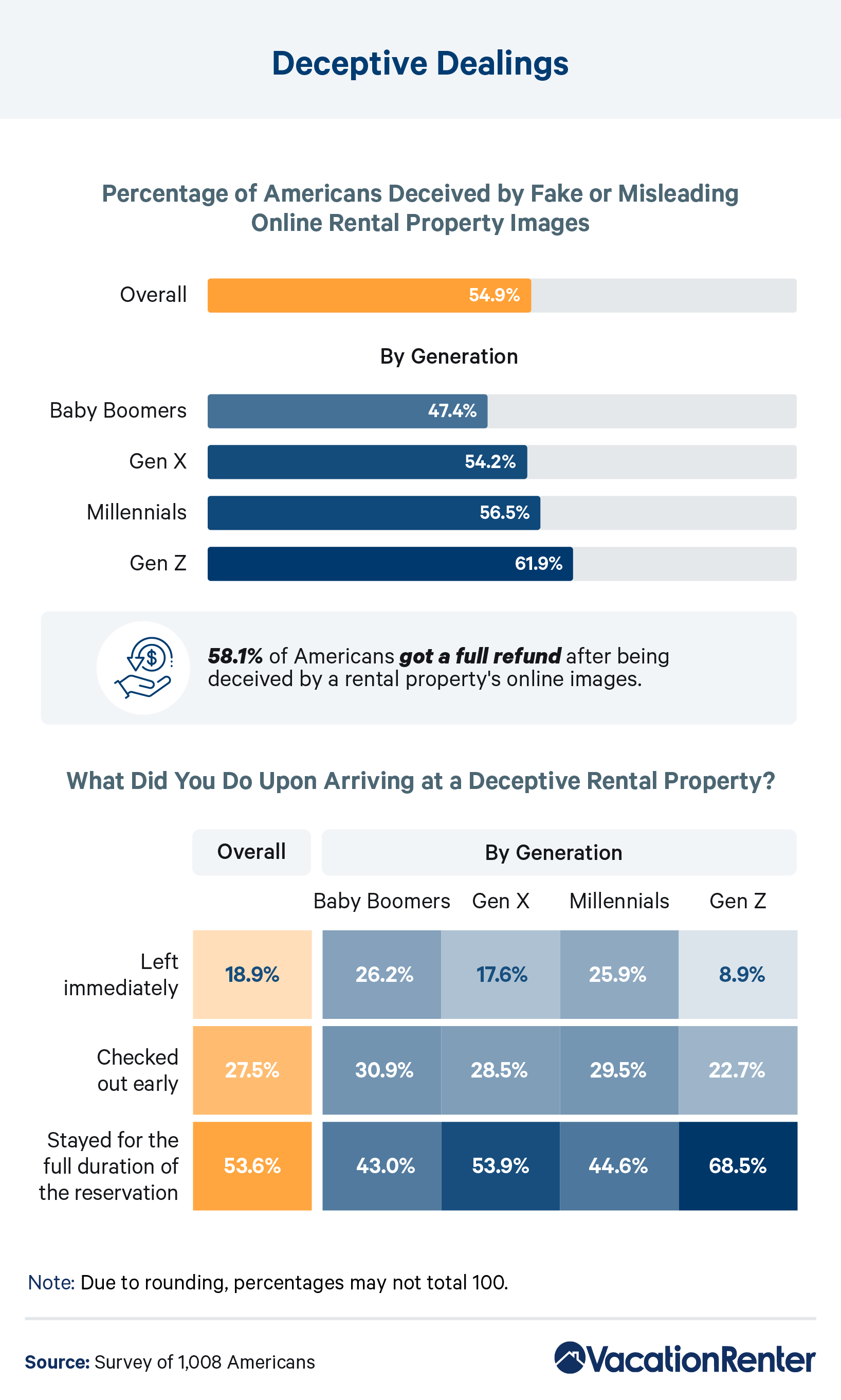
Shockingly, over half of our respondents reported being deceived by fake or misleading online rental property images in some way. Many factors could contribute to this feeling of deception, like setting high expectations for a rental property, but this sentiment from travelers can’t be ignored. Gen Zers (61.9%) and millennials (56.5%) were more likely to have been duped than not, which isn’t a surprise considering the prevalence of impulse purchase behaviors among younger consumers.
Upon realizing the rental property was not what it seemed, nearly 1 in 5 respondents claimed to have left the property immediately. Yet, 53.6% ended up staying for the duration of the reservation, potentially due to the financial commitment they already made, feeling like they had no other choice, or that the rental property could still serve their purpose. Just over 58% of our respondents were able to get a full refund after this experience, so thankfully for them, there was some justice.
What Makes an Online Listing Feasible?
Given the possibility of getting fooled by rental property images, one would think that travelers have their own process of vetting an online listing. At minimum, what do they expect in terms of image quantity, quality, and content?
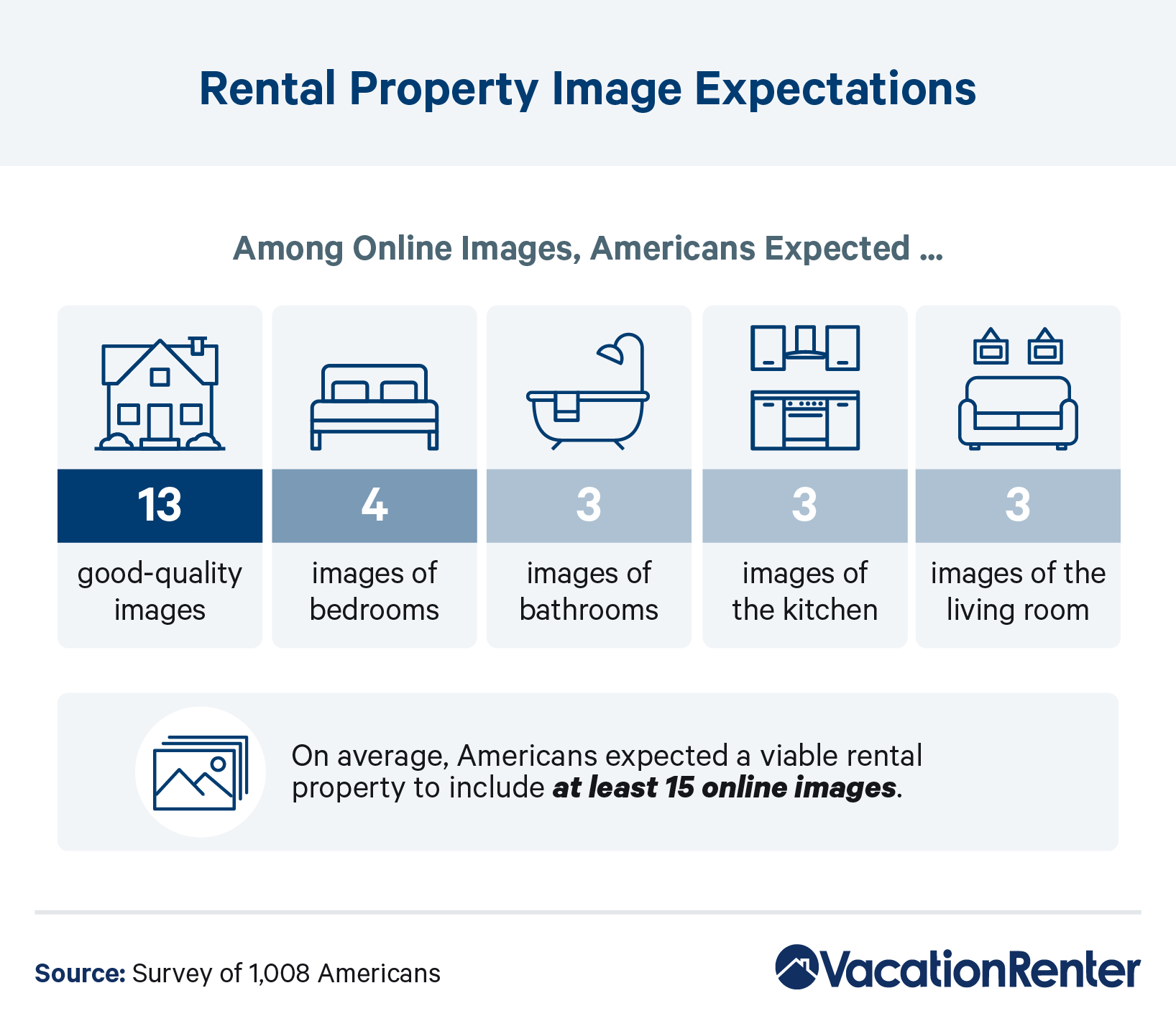
Of course, the more images a rental property listing has, the better. But, at a bare minimum, respondents expected to see at least 15 online images to establish the residence as viable. That’s not all — the travelers we surveyed hoped at least 86% of the images would be good- to high-quality images, with the content ranging across different aspects of the house. Among 15 online images, travelers expected at least four to be of the bedroom, one more than the bathroom(s), kitchen, and living room (three each). Clearly, travelers want to know their rest won’t be compromised.
What Do Images Say About Cost?
Expectation is one thing, and reality is another. To identify how much online rental property images can impact perceived cost, cleanliness, and likelihood to rent, we ran an A/B test, presenting each respondent with an image of a home’s living room. Various versions of the image were created via photo editing (e.g., darkened, stretched, cropped, grainy, saturated). Each respondent was randomly assigned 1 of the 6 images, with the same context: The property is located in a town in California where the average nightly property rental cost is $250. They were then asked to provide their perceptions of the property, as a whole.
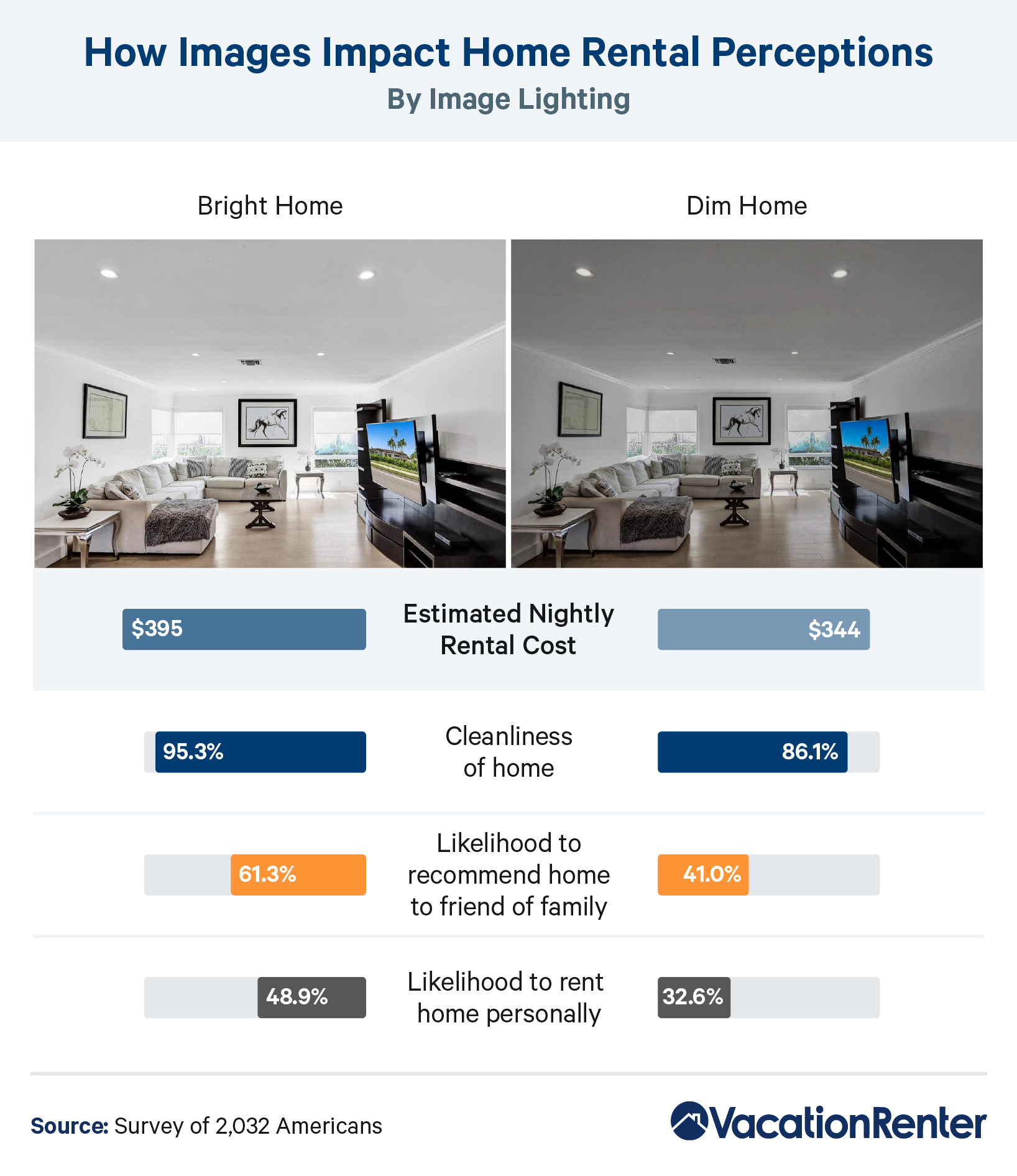
As it turns out, image lighting does play a major factor in how people perceive the cost of a rental property. On average, respondents viewing the dim home image valued the rental home $51 less than those who viewed the bright home image. While both images didn’t strongly impact the perception of cleanliness, those who viewed the bright home image were nearly 50% more likely to recommend the property to friends and family or rent the home themselves than those viewing the dim home image.
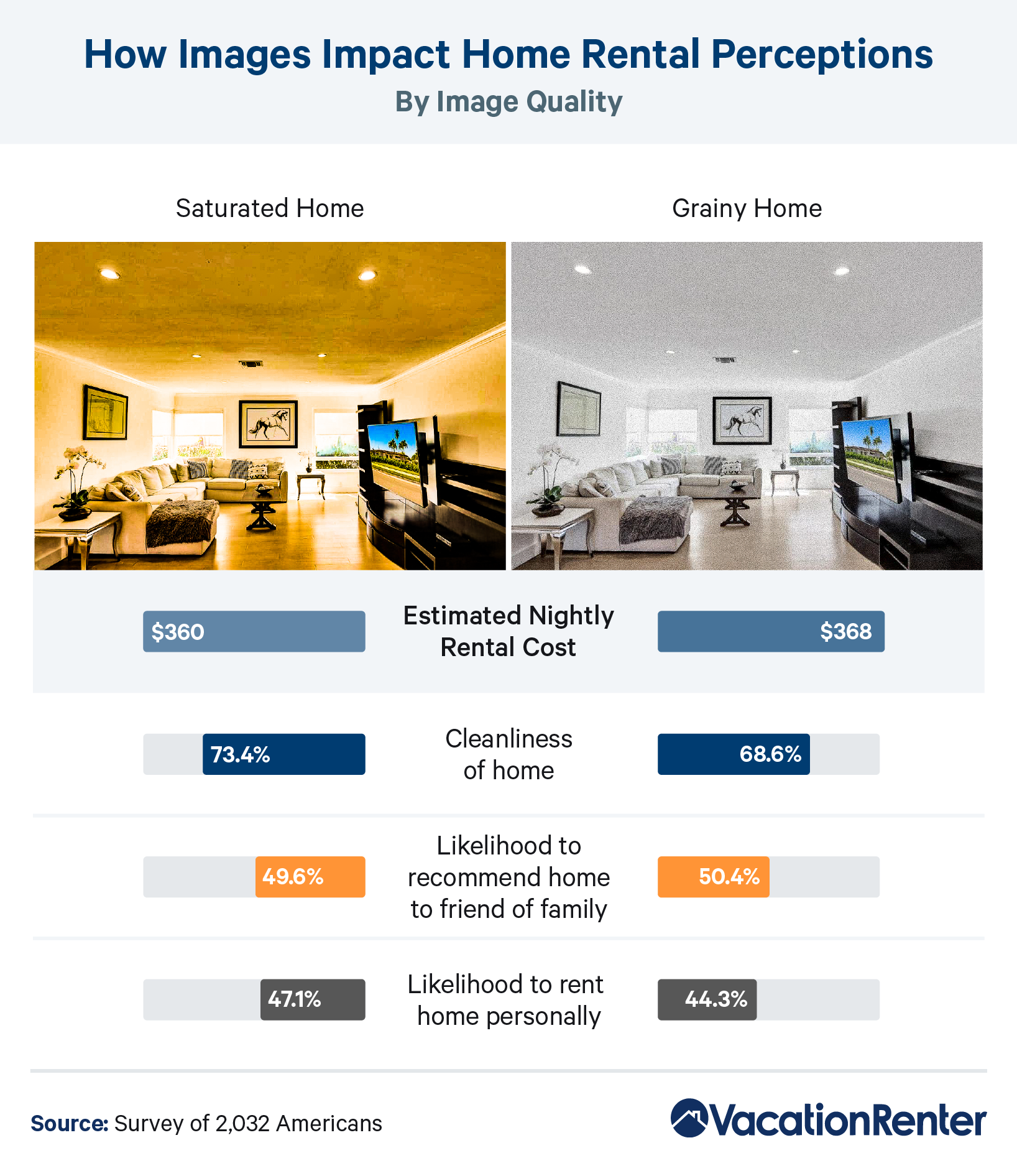
Similar to the thoughts toward the dim home image, both the saturated and grainy home images yielded relatively negative perceptions. While the grainy home was seen as slightly more expensive, the saturated home was seen as clean by more respondents. Still, the perceptions of cost and cleanliness weren’t as positive as they were towards the bright home image. In terms of likelihood to recommend or personally rent, both images yielded similar neutral perceptions.
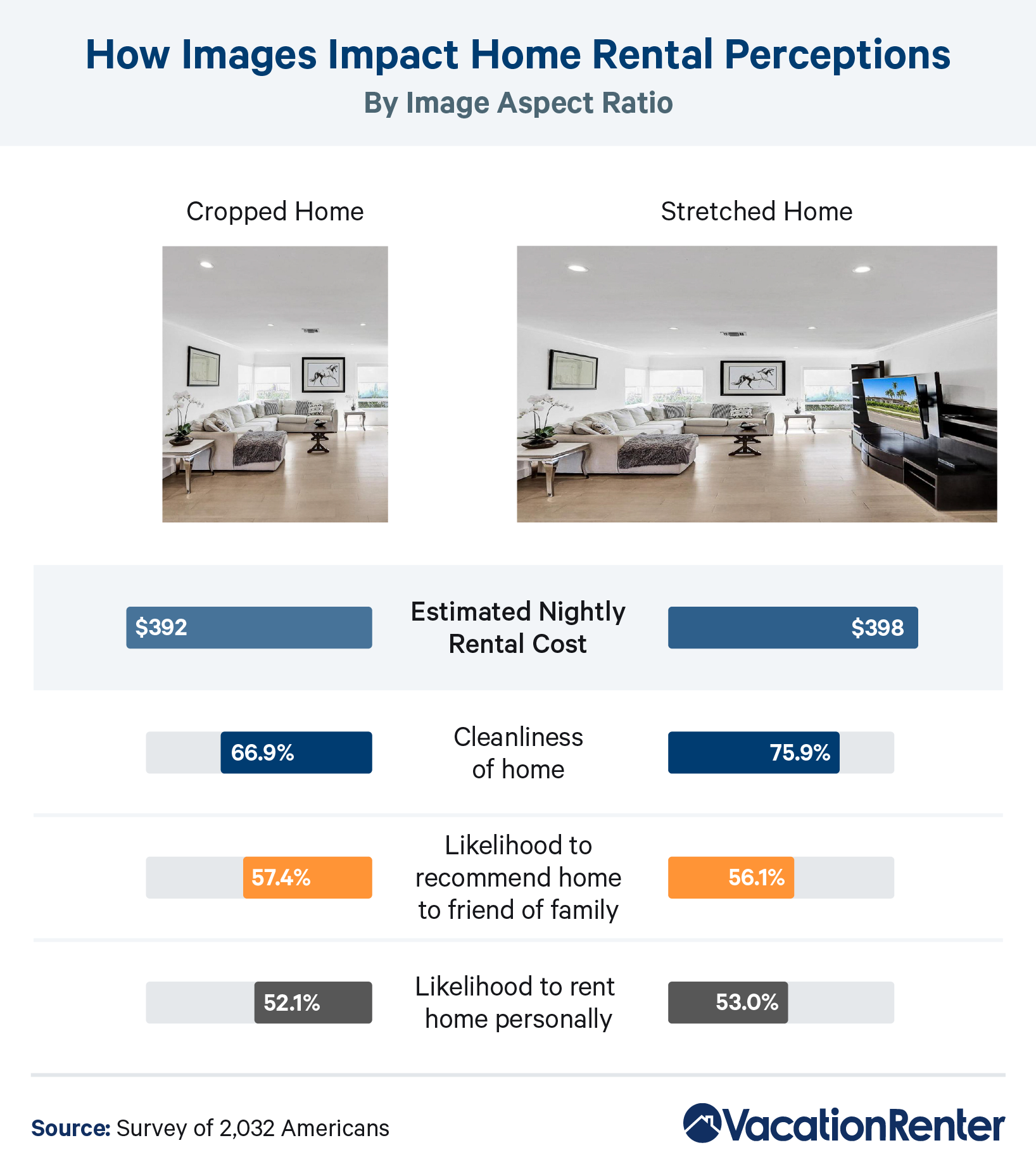
Lastly, we observed that image aspect ratio had no significant impact on the perception of a rental property. The perceived value of the home for both the cropped ($392) and stretched images ($398) mirrored that of the bright home image ($395). While less respondents perceived the home as clean based on these images, the likelihood of recommendations or renting were above 50% for both.
Overall, when taking into account all differences among the various images, lighting clearly had the most significant impact on cost. Among all images, the three with the highest perceived value — bright, cropped, and stretched — all maintained optimal lighting. Meanwhile, the dim home image had the lowest perceived value. The perception of cleanliness wasn’t impacted significantly across all images, as at least 2 of 3 respondents perceived each to be very or extremely clean. Those reacting to the dim image were by far the least inclined to consider renting across all images.
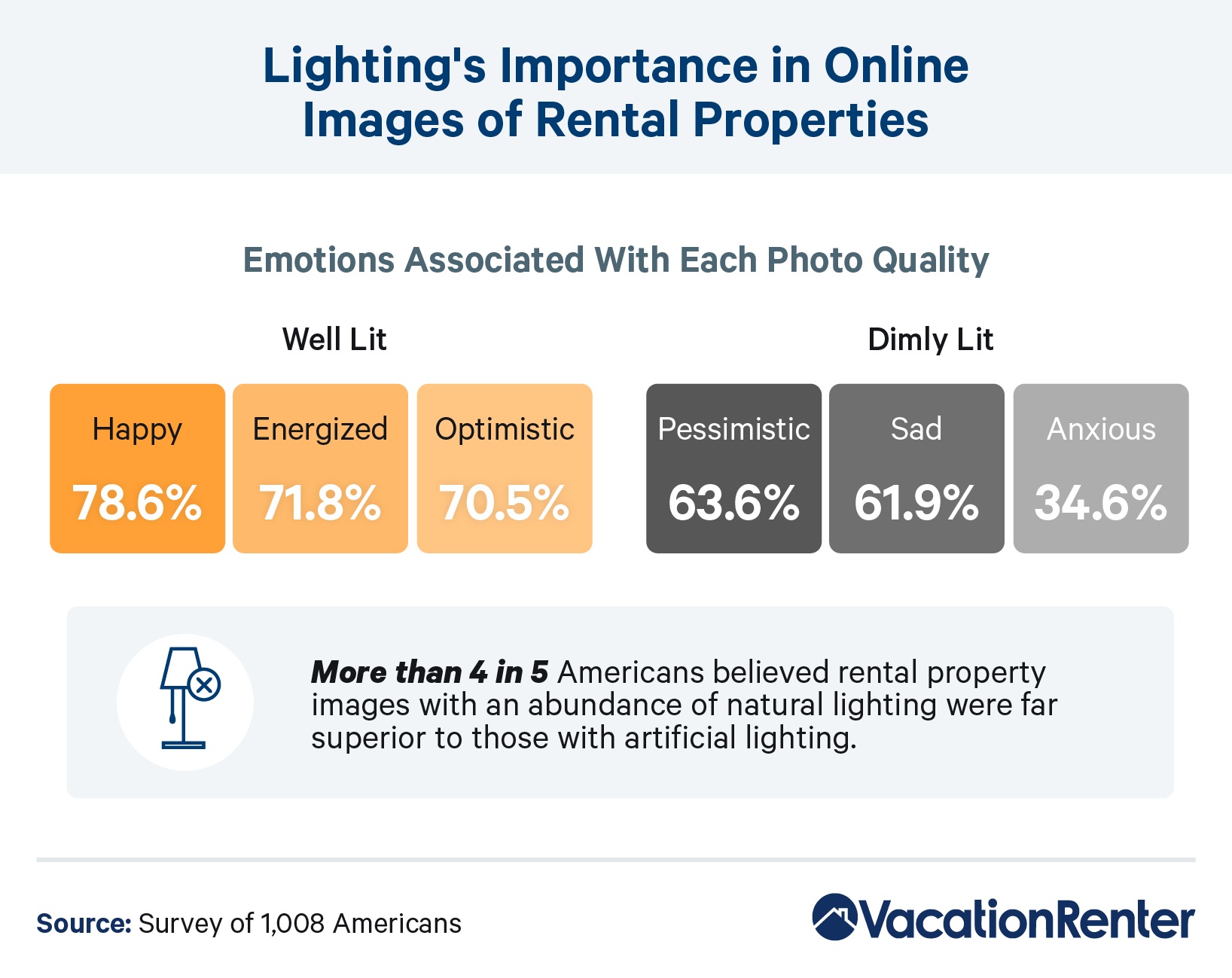
The elicited emotions of lighting may have played a role in our respondents’ perceptions of the property overall. The psychological impact of lighting has been documented, showing how the presence of light alone can improve mood and affect decision-making. In the context of rental properties, similar sentiments were noticed. The most common terms they associated with “well lit” included happy, energized, and optimistic, while the most common terms they associated with “dimly lit” were pessimistic, sad, and anxious. The type of lighting mattered too, with a large majority suggesting that natural lighting in rental property images greatly improves their perception of the residence in comparison to artificial lighting.
Images Really Do Matter
Getting misled by an online rental property listing happens more often than one would expect, but travelers feeling deceived can be based on a myriad of factors. Whether the host is to blame, the onus is put on the traveler to do what they can to vet a listing and make a decision. Images clearly play a large role in property perception for travelers by allowing them to place trust in a residence, and the lighting conveyed in such online pictures seems to be what draws them in or shuts them out. Beyond forming an opinion solely on images, travelers can read the rental property reviews to round out their judgment and cover all their bases.
Whenever you’re in need of a vacation rental, you can trust VacationRenter to help you out. With an abundance of high-quality listings across the United States, you can enjoy your vacation wherever you want without any doubt. Our team of travel experts bring all of the leading travel sites together — including Booking.com, PlumGuide Outdoorsy, and more — to help you find your perfect vacation rental on one seamless platform. No matter where your destination is, we have what you need, so book your next vacation rental with us today!
Mentioned In This Article
- 5W PR: 2021 Consumer Report
- Psychology Today: How Lighting Choices Can Affect Your Mood
Methodology and Limitations
For this study, we ran a survey targeting 1,008 respondents who have previously booked or stayed in a rental property. Additionally, we ran an A/B test targeting 2,032 respondents under the same criteria, ensuring each image had at least 250 unique responses. The average age of respondents was 41.2 years old. Data are solely representative of self-reported claims.
Fair Use Statement
Are your readers looking to travel? Let them know how important it is to vet their travel residence by sharing the results of this study for any noncommercial use. All we ask is you include a link back to this page in your story to credit our team of researchers for their work on this report.